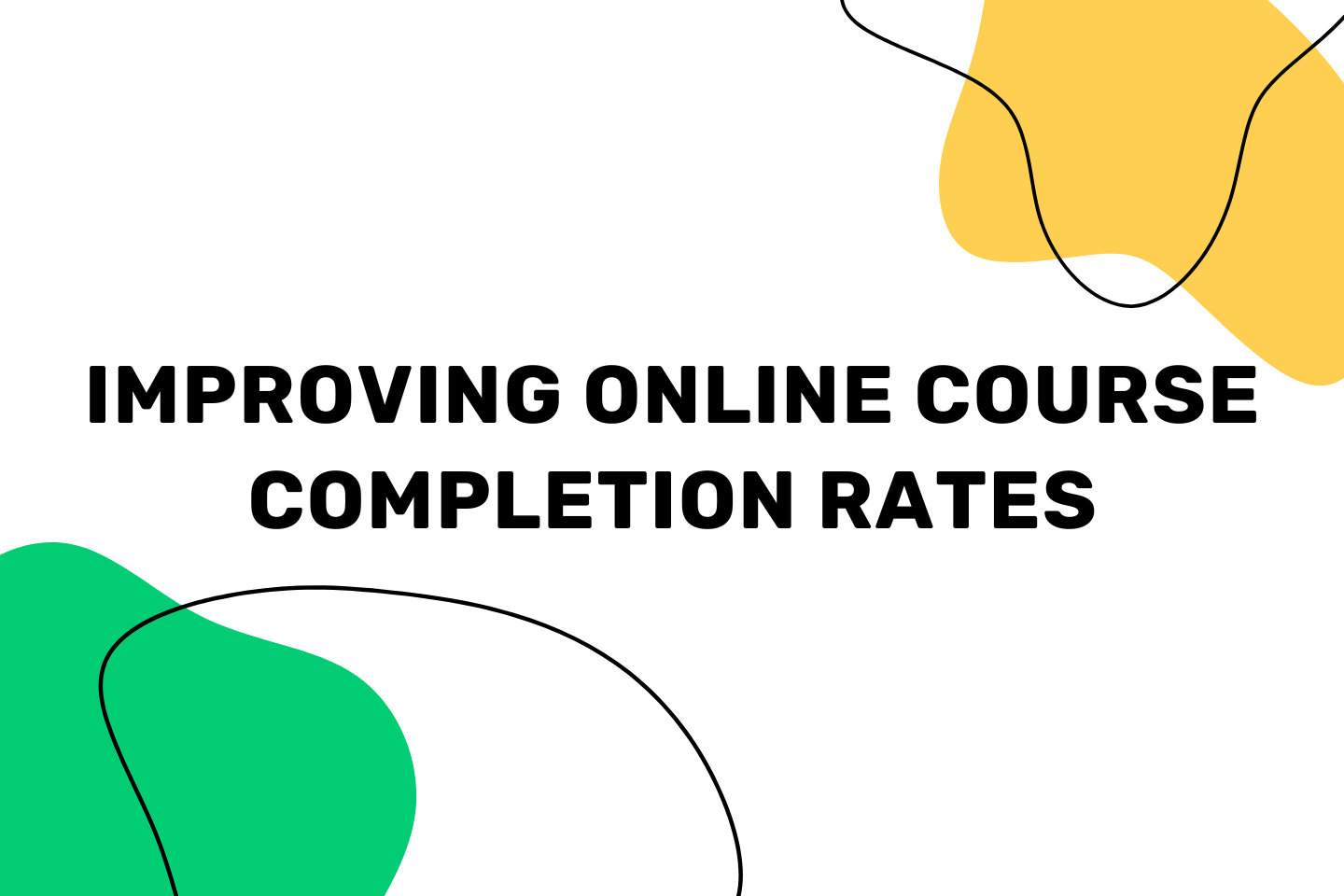As a professional coach or course creator, you’ve dedicated your life to helping other people improve their own lives. Though if only about 5-10% of people are finishing your course, it’s easy to start asking yourself questions like:
- Is my course really that bad?
- Are these students just not a great fit?
- Should I really be a coach?
If you’ve asked yourself these questions, you’re not alone. David Henzel, upcoach’s co-founder and CEO, asked himself the same questions when his own course, Managing Happiness, achieved a depressing 7% completion rate.
As a serial entrepreneur, David had just sold his company, MaxCDN, and wanted to work on something more fulfilling that would impact the lives of others. Therefore, the low completion rate bothered him, so he started looking for ways to improve it.
In just a few months, he found the answer and the completion rate soared from 7% to a stunning 94%. While the material remained largely unchanged, the key to achieving the higher completion rate was adjusting the course structure.
Therefore, we’ll discuss the framework he used to adjust his course and how you can use the same framework to improve your course completion rate.
What is a good course completion rate?
Before jumping into how you can increase your course completion rate, know that average course completion rates hover around 5-15%. Therefore, if your completion rate is within that range, your course is actually performing in a pretty normal range. Therefore, there likely isn’t an issue with the material itself.
However, this post will help you get that into the 70%, 80%, and even 90% range by improving your delivery.
Why don’t people complete online courses?
If you first understand why people don’t complete online courses, it will help you build your program in a way that is more effective at encouraging course completion.
In general, we’ve found that course purchasers typically see the marketing advertisements for courses, resonate with the pain points, and then make an impulse purchase.
The act of purchasing the course (even investing thousands of dollars) makes them feel like they are doing something about their pain point. Therefore, once they make the purchase, they feel better about the problem. That relief typically causes them to lose their motivation, and they never start (and much less finish) the course.
Therefore, the framework we’re about to outline below discusses how you help your students commit to finishing the course. This is much more effective than hoping your students have intrinsic motivation (which they likely haven’t yet developed).
How can I increase my online completion rate?
As I mentioned before, David’s original course hovered around a 7% completion rate. After agonizing over this number for some time, he started playing around with the format and began teaching the exact same material to eight students via Zoom calls. The results were astounding as engagement increased dramatically.
Through this experience, he realized that the group’s positive peer pressure was the key to increasing student engagement. Therefore, he shifted his course model from a self-paced program with no human interaction and passive content consumption to a group coaching program with accountability.
Despite the success of the Zoom calls, he now needed to figure out how to create more structure around the group coaching program so that it could scale.
Therefore, he created the upcoach platform, used it for his own course and managed to achieve a 94% completion rate even as the course scaled. Therefore, here are a few elements that he baked into his group coaching program that enabled him to scale while still enjoying a high completion rate.
If you’d like to check out the upcoach platform for yourself, you can try it out here.
Track Student Progress
The first step to improving course completion rates is to improve your visibility into student progress. If you can identify when and where students get stuck, it’s easy to reach out to them and offer some guidance to help them get unstuck.
Originally, David did this through Google docs, as you can see which students have edited it and how much they edited. Unfortunately, this didn’t work very well for two reasons. First, it was time consuming to manually comb through and see how much of each document students had completed. Second, most students simply created their own copy of the document, and then David had no visibility into student progress.
He solved this with the smart documents feature in upcoach. With smart documents, he could see at a glance how much of each activity was completed, and, for unfinished documents, he could click into them and see where students were getting stuck.

Another way David could easily track which students were falling behind was with a detailed CRM. While most coaching platforms offer a CRM with basic student information such as contact info and whether or not they completed the course, upcoach is the only platform with a detailed CRM. It shows a list of every to-do that a student has or has not completed and insight into how they are doing with habit tracking.

Upcoach also allows you to categorize students by engaged and disengaged so that you can actively keep an eye on those that need additional support.

Want to see the detailed Student CRM and smart document features for yourself? Try upcoach today!
Habit Tracking
I’ve mentioned habit tracking a few times already in this post, though this was one of the biggest game-changers that enabled David to improve his completion rates and create a lasting impact on the lives of his students.
As someone that has taken his course, I can say firsthand that this was the most impactful aspect of the course.
Within each lesson of the course, David introduces several habit frameworks. Students then take those habit frameworks and enter them into a habit tracker that the entire course can see.

By enabling the entire course to see each student’s habits, students are much more likely to execute them as they don’t want other people to see them fail at what they said they were going to do.
Accountability Buddies
In addition to enabling every person in the cohort to view a student’s habit tracker, David went one step further by creating accountability groups. These groups are divided up into 3-4 people, and they meet once a week outside of the typical coaching hours.
Having this additional accountability where students have to own up to any habits they failed to complete makes it even more likely that they will achieve their goals. It also helps the group scale faster as the coach can remove themself from the day-to-day while the students still see continued results.
Weekly Calls
If you recall, David first started to see an improvement in engagement when he taught the material over Zoom calls, so it’s no surprise that weekly calls continue to be an important aspect of his group coaching program.
However, the format of them has changed slightly.
Rather than spending the entire time teaching on these calls, students learn through the videos that are housed in upcoach, and then he discusses issues people had with those concepts and answers any additional questions.
This provides further accountability and helps people that are stuck get unstuck, which encourages them to continue with the course.
Creating a Cohesive Course Experience
The final, yet perhaps most important element to improving David’s course completion rate from 7% to 94%, was switching from multiple different platforms for various aspects of the course to a single cohesive platform that housed all of the information necessary for the course.
When David first launched his course, it was spread out across Google Docs, MemberMouse, Calendly, and Trello.
As a result, many people had trouble finding activities, lessons, and other aspects, which led to more customer support and people coming to the lesson unprepared.
In addition, when people have to remember multiple logins and hunt for various documents, it creates friction and takes away from the overall experience.
As a coach, your goal is to set your students up for success, so invest in a single platform that makes it easy for students to find everything they need. It will also probably save money as you won’t have to purchase multiple different platforms.
Unfortunately, when David was running the first iteration of his course, an all in one platform for group coaching didn’t exist. So he created upcoach to solve this problem.
Upcoach’s interface is designed as a simple scrolling dashboard that contains the habit tracker, meeting scheduler, lessons, to-dos, worksheets, and more.
If you want to try upcoach for yourself, sign up today!
Final Thoughts
If you’re bothered by a low course completion rate and your goal is to change the lives of your students, switch to a group or cohort based coaching approach. Other than the weekly calls, it requires little additional effort than a static course, and your NPS score and overall satisfaction will go through the roof.
Personally, I have purchased plenty of courses over the years. However, I just finished a course for the first time ever – and it was a cohort based course on upcoach. I can say with confidence that the cohort based model truly changed my habits in a way that no other course ever did, as the accountability drove me to complete activities and lessons even when the material was difficult.
Therefore, if you want to really impact your students, restructure your course into a cohort-based course and give upcoach a try today.

